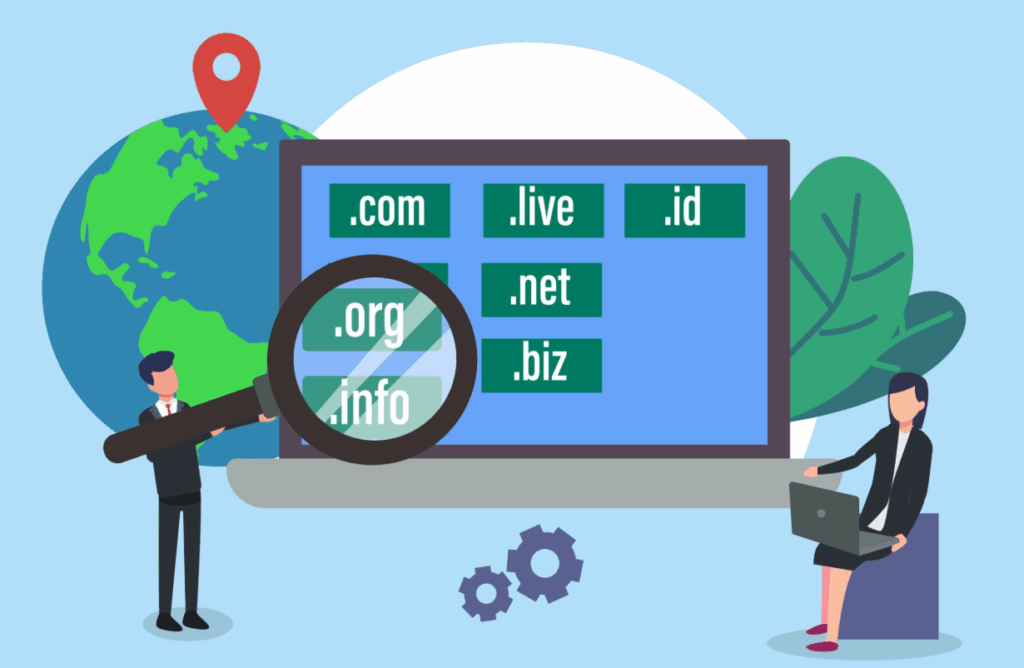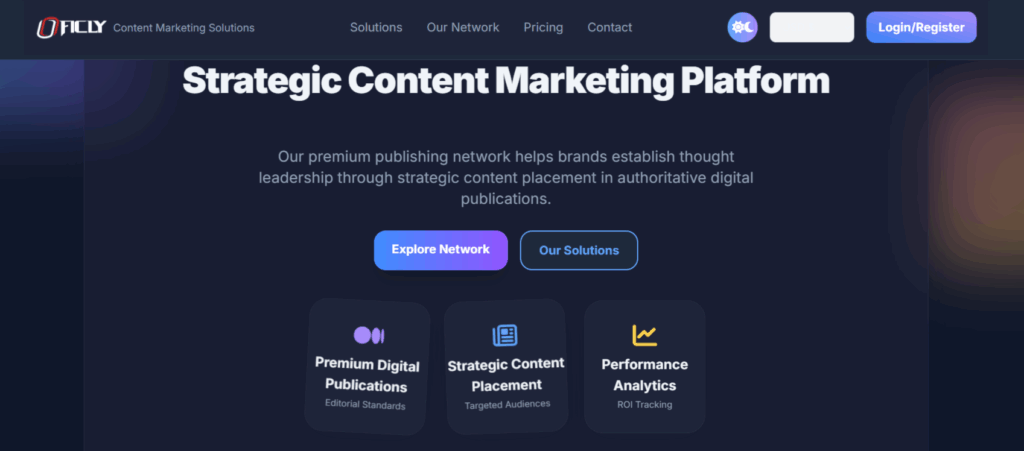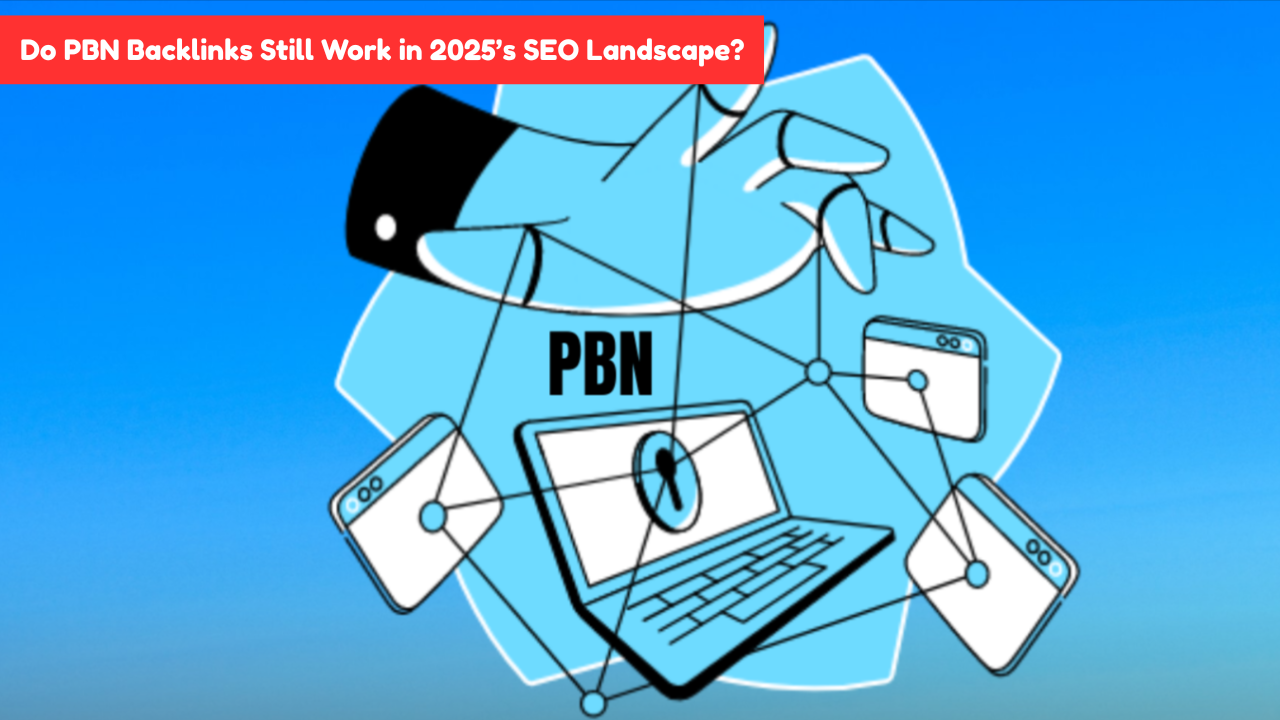Backlinks are hugely important for SEO, but the way you get them is increasingly relevant. One controversialmethod that comes up from time to time is that of PBN or Private Blog Network backlinks. Some say go for them; others would rather have nothing to do with them due to their stimulants.
Many still discuss PBNs in 2025, but the things are not as black-and-white as they once were. As you might imagine, the post will go into PBN backlinks and what they mean today, the pros and cons, and whether they still have a place in the schemes of contemporary SEO.
What Are PBN Backlinks?
A Private Blog Network (PBN) refers to a set of websites. It is attempted to be taken as evidence to increase the authority of a main site. Such a network uses expired domains, whereby the domains have worth in link equity. When multiple sites, even those that may be owned and controlled by the same person, link to your site, on the surface, that effect can make your site look trustworthy and popular.
Because you control all the sites, PBNs allow you to specify anchor text and link placement. From a strategic perspective, such a thing might seem advantageous, but by 2025, search engines have become smart enough to detect such manipulative patterns. If such a pattern is detected, the use of PBNs can lead to harsh penalties, for example, in significant drops in rankings or even the full deindexation of your site.
The Risks of Using PBN Backlinks in 2025
Private Blog Network (PBN) backlinks might appear to offer a quick shortcut to improve your site’s authority. But moving into 2025, they come with significant dangers. Search engines have become too intelligent in assessing link manipulation, and they can punish too harshly for PBN use. Here are the most important dangers you should be thinking of:
1. Advanced Google Algorithms and AI Detection
Machine learning and AI job in Google’s algorithms to analyze backlink behavior much more deeply. They look at everything, from the quality of content to linking patterns and domain relations. Even a well-disguised PBN can be flagged by AI, which uncovers hidden link patterns and signs of manipulation.
How it works:
- AI detects unnatural linking structures, low engagement, and duplicated content.
- Backlinks from unrelated content or sudden link surges can raise suspicion with search engines.
- Ownership patterns like shared IPs or hosting are cross-verified in real time.
2. Manual Penalties and Deindexing
When Google detects unnatural use of back-links through manipulation, they might impose manual penalties. These penalties may deindex pages or the entire site from their search results. It is so difficult to recover from such cases, and the organic growth will be stopped.
Possible consequences:
- Loss of search rankings and major hits on traffic.
- Months of hardy routines and disavowing work.
- Losing in credibility, even despite having attempted deletion of the link.
3. Loss of Long-Term Trust and Brand Credibility
The problem is that even if your tactics work momentarily, the hit time from being caught can be eternal. Once the reputation of a domain is destroyed, it is a slow process of gaining search engine trust, furthering the perception of your brand amongst users.
What this leads to:
- Less likely to be referenced by trusted websites.
- Missed PR and guest posting opportunities.
- All are changes-down-the-road in credibility amongst peers in the industry.
4. Negative SEO Signals and Digital Footprint
Technical signals or “footprints” are often left behind by PBNs, and search engines pick on these somewhat subtle clues. If repeated among several domains, these signals are indicators of artificial manipulation-and even though each site might seem legitimate when uniformly put in.
Few common footprints:
- Similar layout, themes, or content structures.
- Simply being the same backlink profile for multiple sites.
- Same contacts, or tags for analytics, or CMS plugins!
5. False Sense of Authority and Popularity
When multiple websites are linking to your site (even if owned by the same person), this might provide your site with seemingly more trust. Search engines increasingly focus on content that’s both authentic and backed by others. Artificial authority can collapse sooner than one might think in the face of scrutiny.
What really happens:
- Your rankings hold for a while and then, suddenly, the rankings drop.
- Such links from non-authoritative or low-traffic sources hold very little importance, if any, in the long run.
- You may end up putting trust in links that don’t offer any real user engagement or signals of trustworthiness.
How Search Engines Detect PBNs
Search engines like Google have become savvy in spotting Private Blog Networks, even when the site owners have done a lot to keep them concealed. The detection is not just based on content and backlinks but on the whole digital footprint of it all. Here are some of the signals and other methods by which PBNs are distinguished in 2025:
1. Shared Hosting Footprints, WHOIS Data, and IP Overlaps
One of the first signs that sites may be part of a PBN is technical overlap. Even if content appears unique, seDomains and servers always leave almost matching traces behind.
Search engines look for:
- Search engines can detect unnatural patterns—especially when numerous sites operate on the same IP or within a shared C-class subnet.
- Similar or publicly available WHOIS ownership data.
- Nameservers, registrars, or hosts in common.
- CMS themes, plugins, or backend tools in common.
Private WHOIS and different hosts are just two of the properties that these similarities get cross-checked for by top crawlers and AI.
2. Repetitive Anchor Text and Linking Patterns
PBNs usually manipulate direct match keywords to increase rankings, so unnatural anchor texts that repeat themselves create a recognizable pattern for search-engine flags.
Some of the red flags may include:
- The overuse of keyword-saturated and commercial anchor text.
- Validity of the same anchor phrase being linked to from many domains.
- A high percentage of backlinks coming from unrelated or low-authority websites can weaken your link profile.
- Lack of diversity in anchor profiles or referring pages.
3. Low Content Quality and Thin Pages
A PBN site, a bad quality site, boils down to a giveaway of a domain if it ever had authority. They mostly lack depth, user engagement, and relevance.
The common indicators consist of:
- Articles with just a few hundred words that maybe have little to no substantial content or context to justify their existence.
- Spun or auto-generated content that lacks any semblance of coherence.
- Lacking original media, internal links, or even basic formatting.
- Few or no bad backlinks just, and certainly no user comments.
Google’s NLP or natural language processing models are now able to assess quality and relevance of content easily.
4. Google’s Tools and Techniques for PBN Detection
Google computer screens for link networks with AI, machine learning, and often manual review. Because they have years of backlink data and crawling data, the system has evolved into an almost-perfect detector.
The detection methods include:
- Patterns detected by RankBrain and SpamBrain.
- Manual reviews triggered when algorithms detect suspicious red flags.
- Cross-site link analysis to detect unnatural network connections.
- Testing linkages temporally and structurally in terms of when new backlinks appear.
- Signaling through bounce rates and CTRs in contrast to content quality.
How to Use PBNs Safely (If You Still Consider Them Effective)
While discouraged by the industry due to algorithmic risks, some marketers still try to use PBNs carefully within controlled environments. If you are going this route in 2025, you must be super strategic to avoid penalties and have a low profile.
With that in mind, here are ways to reduce the risk:
1. Diversify Hosting and IP Addresses
Whenever PBN sites hosting is configured on one IP block or by the same server(s), the network footprint is sorely exposed.
These are the safe practices:
- Make use of multiple hosting companies across different IP ranges.
- Try to exercise cloud systems or residential IPs to ensure diversity.
- Never go for SEO hosting that advertises “PBN-safe” network-they are already on Google’s radar.
2. Mask WHOIS and Ownership Data
Google often cross-checks domain registrant data to spot PBN clusters.
To avoid linking your identities:
- Use domain privacy protection (just don’t do it for all domains – vary it).
- Register your domains with different aliases or different business names.
- Stagger registration dates so those bulk purchases from the same registrar never actually happen.
3. Build Realistic, Quality Sites
Thin content and low user value scream “PBN.” The more your websites seem fake, the better the authorities get at grabbing them.
Instead:
- Do come up with real and original content (a minimum of 1,000 words do well for blog or guest post).
- Use real images, an author bio, social links, and even a little comment section.
- Make internal linking real internal value-oriented linking so the site looks like a legit niche blog.
4. Link Naturally — and Sparingly
Connecting to your money site via every post or just posting outward links is suspicious.
Rather:
- Link to authoritative third parties as well as your own.
- Never overuse exact match anchor text; use branded ones or generic phrases interspersed.
- Keep outbound links per post to a reasonable amount: 2–4 max.
5. Avoid Interlinking Your PBN Sites
Connecting multiple PBN sites creates a clearly visible network footprint. This is an immense red flag.
Safer tactics:
- Manage each site independently, without linking them to one another.
- Avoid mutual backlinking or any sort of strong cross-referencing.
- Each site should have its own set of social profiles, plus separate themes and plugins.
6. Monitor Results Closely and Stay Updated
Google’s detection systems evolve rapidly. What is safe today is considered spam tomorrow.
Be proactive:
- Track rankings, backlink profiles, and sudden drops.
- Use some tools like Ahrefs or SerpWox to monitor referring domains and anchors usage.
- Keep an eye on changes in Google spam policy and algorithms.
Key Challenges of Building and Maintaining PBNs in 2025
Building and operating a Private Blog Network requires more than what one would at first think. These are, as the major roadblocks encounted during the construction in the year 2025 :
1. Finding the Right Domains

Premium domain names that are expired and have clean backlink histories are rarely found and are overpriced. They are usually sold through auctions on GoDaddy or NameJet, where competition rages at the highest levels. You then have to see that they are niche-relevant and have never been penalized. This phase takes up some time, cash, and an additional amount of careful research with tools like Wayback Machine and Ahrefs.
2. Hosting Without Footprints
In order to get detected easily by search engines, yet another issue is each of the PBN sites must have its own separate hosting, IP address, and DNS setup. Sharing any of these server details can be used to link together sites by search engines. Hence, using different hosting accounts for each site would only increase the costs and technical adversities. Even slight server overlaps are enough to cast suspicions on your network.
3. Creating High-Quality Content
Since search engines are able to easily recognize low-grade content or even content spun with AI, each PBN site should host articles that are original, fresh, and relevant to the topic in question. Hiring a writer or generating content through different means is required. Lacking good content, the site can not pass as a legitimate one.
4. Smart Link Placement

Repetitive anchor text or linking just to the homepage makes the pattern obvious. Links should be placed naturally enough in relevant content using varied anchors. Outbound links to other high-authority websites can also help in hiding the intent behind them. Variety supported by consistency places the network just beneath the radar.
5. Avoiding Technical Footprints
Using repeated WHOIS information, themes, plugins, or Analytics codes binds your sites together. Each PBN site should look and feel different in terms of user experience. Put another way: even having the same favicon or layout could be a red flag. A proper masking helps in keeping it anonymous.
6. Maintenance and Monitoring
PBNs are never a “set it and forget it” property. Each site should be maintained with regular updates, new content, and links verification. Site downtime, broken links, or spammy backlinks can reduce your site’s trustworthiness. Without any care, it may bring down the network as a whole.
Are PBNs Worth the Risk in 2025?
Private Blog Networks have always lived in the gray areas of SEO—and certainly by 2025, that gray area is becoming smaller. Notably, with the advent of AI-powered detection systems alongside other state-of-the-art spam filters, the decision to run PBNs rests heavily on the basis of one’s risk tolerance, industry, and long-term objectives.
Short-Term vs Long-Term ROI
- Short-Term Gains:
PBNs can grant you an instant spike in ranking, especially in low-competition keywords. It is an enticing proposition for aggressive marketers or affiliate sites looking for quick wins. But these rewards come with strings attached: one update, or a manual review, and boom-immediate erase. - Long-Term Drawbacks:
PBNs were never there to stay. You basically have to keep them running on a daily basis, and so many things can go wrong: de-indexing with the next Google update or an unforeseen manual action threatening a penalty, and so forth. Building trust again, once penalized, is a great uphill battle.
Sustainability of PBNs in Modern SEO
PBNs are against the whole concept of earning links the natural way. In an age where search engines reward authoritative, content-driven link acquisition, running a PBN is swimming against the current. On top of that, every year seeing the cost and effort to keep them under wraps from the considering detection algorithms starts to skyrocket. If you plan on growing a long-term brand, this method is simply inconsistent with sustainable growth.
Where PBNs Might Still Be Used
Despite the risks, some marketers still deploy PBNs in certain contexts:
- Gray/Black-Hat Niches:
An intense competition exists in industries such as gambling, CBD, adult content, or quick-turn affiliate sites, which is why they typically employ PBNs. In this kind of short-term profit scenario, sometimes effectively, a penalty is second to considerations in front of success. - Burner Sites or Test Projects:
Repos (private networks) may be used by some SEO practitioners for experimental-type websites where they don’t mind long-term damage. They simply pass on to the next step if the site is unsuccessful or penalized.
Smarter and Safer Alternatives to PBNs
While some consider PBNs to be a shortcut, the risk almost always outweighs the reward. Luckily, 2025 presents much smarter and sustainable ways to build quality backlinks. The techniques that different in safeguarding your site from penalties with building brand reputation, visibility, and long-term growth.
1. Digital PR & Content Marketing

Digital PR entails telling stories while using an outreach strategy to gain media mentions and high-authority backlinks from trusted publications.
How to do it:
- Make unique stories about your brand, product, or research.
- Pitch journalists, bloggers, and media outlets relevant to your niche.
- Post compelling blog posts, interviews, or press releases that follow the logic of link acquisition.
A well-executed digital PR builds the client website into an authoritative site deserving of citation-made without questionable means.
2. Guest Posting & Niche Edits
Guest posting allows you to contribute useful content to other blogs related to your niche in return for a high-quality backlink. Niche edits involve adding links into existing, relevant articles on someone else’s website.
How to do it:
- Find respected blogs or media outlets relevant to your sector that accept guest posts.
- Pitch ideas that are worthwhile and of interest to their audience.
- When conducting niche edits, contact site owners with suggestions for content updates or link insertions that will help improve their articles.
3. Building Linkable Assets
Organic backlinks are one of the highly sought-after things from the creation of link-worthy resources.
Examples of linkable assets:
- Interactive tools or calculators
- Studies supported by data or original research
- Comprehensive guides or whitepapers
- Infographics or visual explainers
4. HARO & Journalist Outreach

HARO (Help a Reporter Out) is a platform where journalists find and connect with sources. By sharing your quotes or insights, you will get backlinks from the media outlets’ organizations that are recognized as having high authority.
How to:
- Sign up for HARO or alternatives such as Terkel, Qwoted, or Featured.
- Quickly respond to queries you find relevant with crisp and value-added answers.
- Always include your credentials and a link to your website or bio page.
Conclusion
By 2025, link building would have changed remarkably and no longer stays about shortcuts and risky practices like running private blog networks. They might work in dusty corners of the web; however, their long-term value and use in modern SEO practices are certainly not guaranteed. If you want to seriously increase your online presence, therefore, focusing on the smarter approaches such as Digital PR, guest posting, content marketing, and journalist outreach is the way forward. Besides backlinking, these strategies also must build brand credibility on a basis of trust and also nurture organic reach. Investing your time and resources in operating ethically-priced, value-packed link-building methods means building for a great future for your business in a search-driven digital era.
